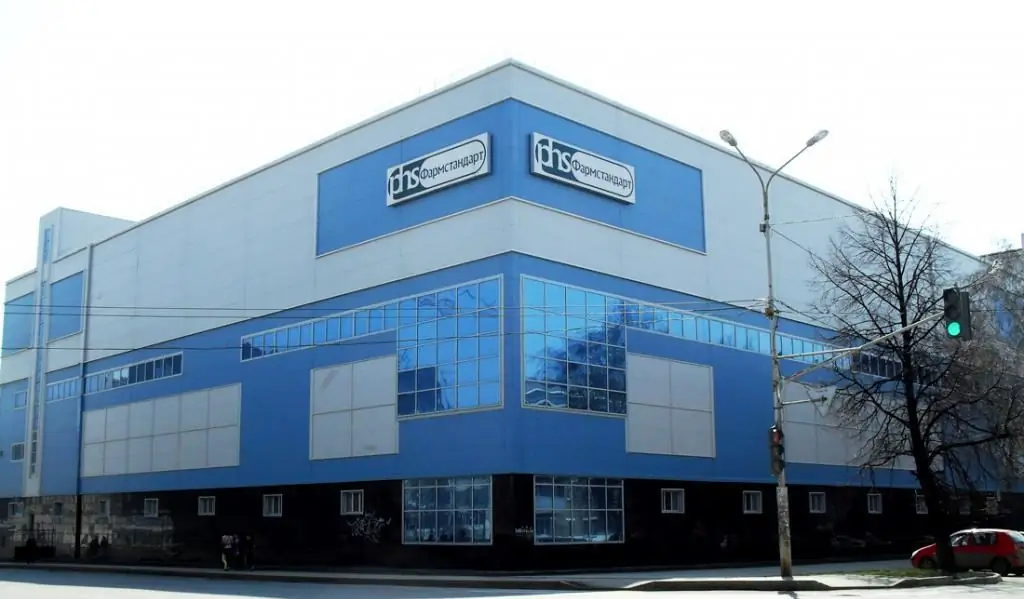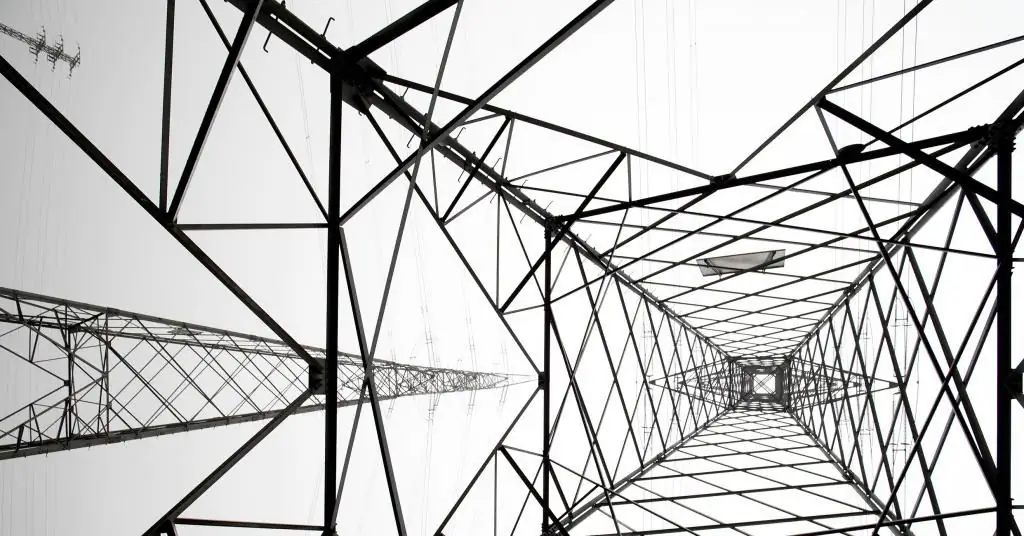2026 Author: Howard Calhoun | [email protected]. Last modified: 2025-01-24 13:10:47
Architect Ivan Zholtovsky developed the design of the HPP-1 building for the state power plant. The complex of buildings resembles the shape of a ship. This oldest ship has been running since tsarist times. Alexander III, by his decree, ordered the construction of an alternating current station to illuminate Moscow.

Historical recursion
Until 1897, Moscow received electricity from the Georgievskaya power plant, currently there is an exhibition of the New Manege. HPP-1 began operation on November 28, 1897 with a capacity of 3.3 MW, it gradually developed and improved in accordance with the times and technologies of that period. The achievement of production is the increase in capacity over 7 years to the level of 10.5 MW.
The following equipment was installed on the production area:
- oil boilers;
- steam reciprocating machines;
- generators.
The first Moscow trams were powered by this station. 1907 ended the history of the energy sector of our country with the launch of the second stage, where the Raushskayastation, put into operation a new machine room and boiler room. During the First World War, economic difficulties began in the country, which affected the development of the energy industry, in 1915 the equipment of HPP-1 was transferred to feed on peat near Moscow.
Development of the Soviet period
In 1917, the country and laws changed. The Council of People's Commissars by its Decree confiscated the property of the joint-stock company for electric lighting, established in 1886. On December 29, 1917, HPP-1 became the property of the young Soviet Republic. It should be noted that by this period the enterprise was the largest in terms of capacity (55 MW) with 12 turbines.
Soviet development proceeded as follows:
- 1920 - the company operates as a regulatory structure maintaining the standard frequency and voltage of the power system.
- GOELRO developed a 5-year plan to increase capacity by 75 MW.
- Project activities were overfulfilled, new units were installed, which made it possible to reach capacities up to 110 MW.
Further development of the station is acquiring a cogeneration direction. In 1931, the first hot water main was introduced. It's time to create a specialized enterprise. Since 1931-28-01, Mosenergo disposes of heat networks, their operation and development under the guidance of Doctor of Technical Sciences Professor Shifrinson B. L.

Notable events
During the years of the Second World War, brigades were created from the company's employees, whichcarry out air defense of a strategic facility. At the same time, the team continues to work at the station, providing light and heat to residential and industrial premises does not stop.
After the war, Mosenergo began to use natural gas at HPP-1, becoming the first organization among energy enterprises operating on this type of fuel.

Merge stations
In 1956, the Government decided to combine the existing SHPP-1 and SHPP-2, which provided energy for transport, illuminated city streets, gave light to buildings and structures.
Since 1956-01-06, HPP-1 named after Smidovich. Pyotr Germogenovich was an outstanding party and statesman, the USSR Government decided to name the station after him. Registered object on the street. Sadovnicheskaya No. 11 in Moscow. It saturates the unified energy system of the Russian Federation with electricity, supplies heat to the Moscow Central District jointly:
- with the Kremlin;
- State Duma;
- Old and Lubyanka squares.
In the post-Soviet period, the enterprise underwent changes with the improvement of technical equipment.

Upgrades
At HPP-1 named after P. G. Smidovich until 1993, in different production periods, 6 reconstructions of the main equipment were carried out, powerful - up to 25 MW - turbogenerators were installed, they were supplied by the Kaluga Turbine Plant. Installation of a new oil-fired boiler fixed 2001year, he increased the output of thermal energy by 1.5 times. Replaced turbogenerator and launched a modified turbine in 2006, increasing power by 25 MW.
JSC Atomenergomash entered into an agreement with the management of HPP-1 named after P. G. Smidovich regarding a set of measures for boiler equipment. Leading engineers of the country are engaged in the development of design projects.

What are the prospects for the object?
Articles appeared in the press that in the near future for HPP-1 (Mosenergo) closure is inevitable. The company's territory is attractive for luxury real estate.
It should be taken into account:
- location of the station on Raushskaya embankment in the Central Administrative District of Moscow;
- commissioning of the facility since 1897;
- currently the enterprise is working properly;
- 86 MW. - produces electrical power;
- 951 Gcal. - gives off thermal energy;
- 390 million kW - generates electricity per year;
- runs on gas.
This is an operating enterprise with large production capacities, which brings many benefits to Muscovites, supplying them with light and heat, and is officially considered a unique architectural monument.

Refutation of information in the media
A combination of these factors led to denials regarding the closure of an important energy hub.
Official statementrepresentative of Mosenergo:
- enterprise effectively continues to improve;
- developed new schemes for the reconstruction of the station;
- created programs for the further development of the generating company;
- reduced air pollution, optimized thermal conditions, upgraded equipment;
- condensers cool the waters of the Moscow River, the purified liquid returns to the channel;
- no decommissioning planned;
- no one has made any changes in relation to the property of HPP-1 and is not going to in the future;
- the task of the oldest operating power plant is to provide energy resources to the Moscow region.
JSC "Mosenergo" consists of 15 stations, but HPP-1 has always been one of the leading, outperforming in many ways.
Enterprise First in Everything:
- for the first time a conductor was laid to power tram lines;
- creation of a control room;
- introduced domestic heating pipe;
- gas has been used.
A museum exposition was created in the administrative building, historical events caused its opening. Employees have collected exhibits, documentary collections from the archives with photographs and memoirs of old-timers. A model of the old station, the present and what it will become in the future, is on display. A visual representation is given of how changes and transformations took place in the equipment, the technological chain of the energyproduction. Experts do not refuse to conduct excursions, the story of the chief engineer of the power plant Alexei Vladimirovich Shuvalov, who thoroughly understands not only production issues, but also the historical facts of his enterprise, is interesting.
Recommended:
Egorievsk Meat Processing Plant: address, management, production capacity and product quality

Sausages are now very popular. They are bought not only for the festive table, but also for daily consumption. A very wide range of this type of delicacies is represented by "Yegorevsky Meat Processing Plant". Information about the company, its products and contacts is presented in this article
"Renault": manufacturer, history and date of creation, management, country, technical focus, development stages, introduction of modern technologies and car quality

The Renault manufacturer produces high-quality cars that are in demand in many countries of the world. The products were to the taste of Russian motorists. In 2015, the French concern produced the millionth car from the lines of the Russian plant
Diesel submarines: history of creation, boat projects, principle of operation, advantages, disadvantages and stages of development

The idea of creating a submersible moving under water, actually a prototype of a submarine (hereinafter referred to as a submarine), arose long before their actual appearance in the 18th century. There are no exact descriptions of underwater vehicles in numerous legends, nor in the Renaissance genius Leonardo da Vinci
Vitamin plant in Ufa: history and date of establishment, management, addresses, technical focus, stages of development, introduction of modern technologies and product quality

The life of a modern person takes place in a rather unfavorable ecological environment, accompanied by intellectual and emotional overload. You can't do without taking vitamins and minerals even in the summer. This material will focus on one of the oldest enterprises in Ufa, which is engaged in the production of useful products
Irkutsk heavy engineering plant: history and date of establishment, address, management, technical focus, stages of development, introduction of modern technologies and quality

Irkutsk heavy engineering plant is a city-forming enterprise producing equipment for leading industries in Russia. The company's products are supplied to the domestic market, finds recognition and demand abroad

